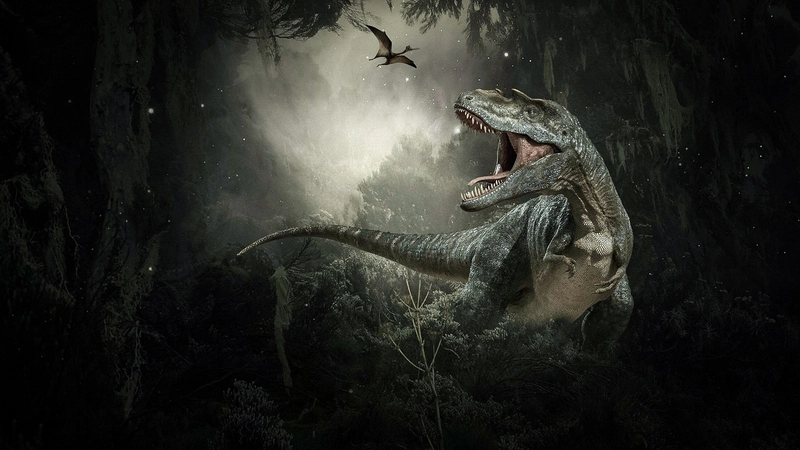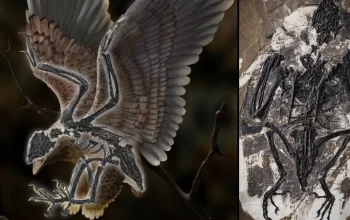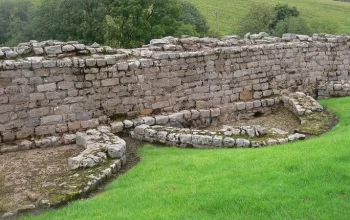
The 166-million-year-old carnivorous dinosaur footprint found in Yorkshire represents the largest of its kind ever found in the region.
The discovery was actually made by local archaeologist Marie Wood on a beach in Scarborough in April of 2021. However, the research paper on the subject was published on February 16, 2023 in the Proceedings of the Yorkshire Geological Society.1
While spending time on the beach on an April day, Marie Wood saw a three-toed dinosaur footprint by chance. Although similar fossils have been found in that region before, the footprint Marie Wood saw was about 80cm (31in) long, making it the largest ever found there.

With the last sample, the number of similar footprints found in the region since 1934 reached six. The previous footprint was found by geologist John G. Hudson in 2006.
In an excited rush, Marie Wood informed local fossil experts, and after a while she contacted paleontologist Dean Lomax.
After the analysis, it was determined that the footprint belonged to a carnivorous theropod that lived about 166 million years ago. This is interpreted as an important discovery to make predictions about the behavior of carnivorous dinosaurs in the region during the Jurassic period.
Theropods
A clade of dinosaurs that arose in the Triassic period, about 230 million years ago, and is characterized by three-toed limbs.2 There are both insectivorous, herbivorous and carnivorous theropod species. The nine-ton Tyrannosaurus rex is a theropod. In addition, modern birds also descend from theropods.
John G. Hudson, lead author of the research paper, thinks the footprint may have belonged to a Megalosaurus-like animal with a hip height of between 250 cm (98 in) and 300 cm (118 in).
120-Million-Year-Old Fossil Found in China Has A Bird-Like Body, A Dinosaur-Like Skull
It was donated to the museum
The footprint fossil on the coast was at risk of being damaged by natural factors such as erosion and tides, as well as human factors. Therefore, it was decided to remove it from the beach through a team of experts, and the fossil was donated to the Scarborough Museum and Galleries to prevent damage.
According to the news of the University of Manchester, the footprint fossil will be exhibited at the Rotunda Museum after a while.3
- John G. HUDSON, Mike ROMANO, Dean R. LOMAX, Rob TAYLOR, Marie WOODS, “Proceedings of the Yorkshire Geological Society“, Vol 64, February 16, 2023[↩]
- “A Basal Dinosaur from the Dawn of the Dinosaur Era in Southwestern Pangaea“, Brian S. CURRIE, Carina E. COLOMBI, Isabel P. MONTAÑEZ, Paul C. SERENO, Paul R. RENNE, Ricardo N. MARTINEZ, Oscar A. ALCOBER, Science, Vol 331, January 14, 2011[↩]
- “Giant meat-eating dinosaur footprint is largest found in Yorkshire“, University of Manchester, February 16, 2023[↩]



